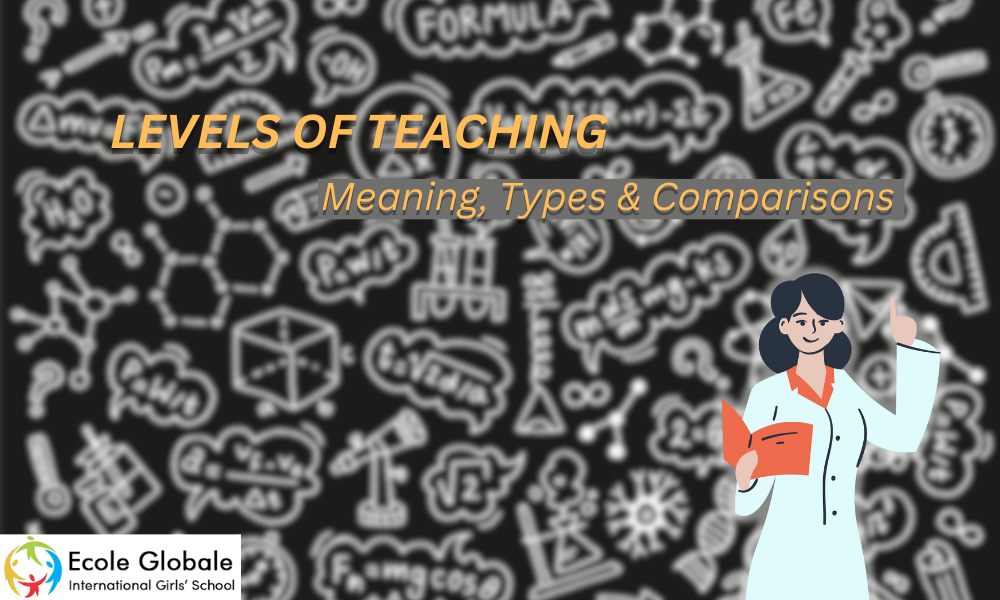Teaching is more than imparting information; it’s a layered approach that fosters understanding, critical thinking, and personal growth in students. This guide explores the three primary levels of teaching—Memory, Understanding, and Reflective—highlighting each level’s objectives, methods, and significance.
This breakdown of teaching levels will benefit educators, parents, and students, helping them appreciate the purpose and potential of each teaching approach.
The Memory Levels of Teaching

What Is the Memory Level?
The Memory Level of Teaching emphasizes building foundational knowledge through memorization. This level centers on the retention of factual information, such as vocabulary, data points, or multiplication tables.
Often applied in early learning stages, this approach prioritizes the development of memory skills, laying a groundwork essential for more advanced learning.
Key Objectives of the Memory Level
- Retention of Information: Ensures that students can accurately recall key facts.
- Foundation Building: Creates a base layer of knowledge, preparing students for more complex levels of thinking.
Techniques and Methods for Effective Memory-Level Teaching
To achieve the goals of the Memory Level, teaching methods often focus on repetition and reinforcement. These techniques are widely recognized for their effectiveness in helping students retain foundational information:
- Repetition and Drill Exercises: Strengthens memory through consistent practice.
- Mnemonics and Memory Aids: Simplifies information retrieval with tools like acronyms, rhymes, or imagery.
- Flashcards and Quizzes: Engages students interactively, enhancing retention through repetition.
Why Is the Memory Level Important?
Although basic, the Memory Level is essential for subjects requiring a strong recall foundation, such as mathematics, language learning, and history. Without a solid memory base, students may struggle with higher-level concepts later. This level builds the necessary knowledge scaffolding for progressing to deeper understanding and analysis.
The Understanding Levels of Teaching

What Is the Understanding Level?
Moving beyond memorization, the Understanding Levels of Teaching encourages students to grasp concepts and relationships between ideas. This level is designed to help learners understand how and why things work, enabling them to apply knowledge in new and meaningful ways.
Key Objectives of the Understanding Level
- Conceptual Comprehension: Promotes a deeper grasp of the “why” and “how” of topics.
- Application of Knowledge: Allows students to use concepts in varied contexts, an invaluable skill for subjects like science and social studies.
Techniques and Methods for Understanding Levels of Teaching
Teachers can foster a deeper understanding using techniques that promote active learning and critical thinking:
- Discussions and Interactive Dialogue: Facilitates student participation and encourages critical thinking.
- Problem-Solving Exercises: Enables students to apply theoretical knowledge to practical challenges.
- Concept Mapping: Visual tools help students connect and understand relationships between ideas, aiding comprehension.
Significance of the Understanding Level
The Understanding Level is vital for developing a well-rounded intellect. By building analytical thinking skills, students can make meaningful connections between different concepts. This level is especially important in complex subjects such as biology, literature, and history, where understanding relationships and processes is crucial.
The Reflective Levels of Teaching

What Is the Reflective Level?
The Reflective Levels of Teaching represents the highest level of cognitive engagement, focusing on critical thinking and self-reflection. Students are encouraged to think independently, question assumptions, and evaluate information critically.
Key Objectives of the Reflective Level
- Critical Analysis: Builds the ability to assess, evaluate, and critique information.
- Synthesis of Ideas: Encourages creativity by combining concepts to form new insights.
Techniques and Methods for Reflective-Levels of Teaching
At the Reflective Level, advanced teaching strategies are used to stimulate in-depth analysis and independent thought:
- Case Studies: Real-world scenarios provide practical applications of theoretical knowledge.
- Independent Research Projects: Encourages students to conduct self-led investigations, promoting ownership of learning.
- Debates and Group Discussions: Offers a platform for students to present, defend, and refine their ideas, developing balanced perspectives.
Importance of the Reflective Level
This levels of teaching is particularly beneficial in higher education and professional settings, where analytical and creative thinking are invaluable.
Fields such as philosophy, psychology, and business thrive on reflective teaching methods, as they equip students with the tools to approach problems from multiple perspectives, fostering innovation and critical insight.
Comparing the Levels of Teaching

- Simplified, Clear Language: We use accessible language to cater to readers from diverse backgrounds.
- Conversational and Engaging Tone: The approachable style creates a connection, enhancing comprehension.
- Practical, Real-Life Examples: Each level is illustrated with real-world applications, making abstract concepts tangible.
Conclusion
Understanding the levels of teaching enables both educators and learners to succeed.
By applying the Memory, Understanding, and Reflective levels strategically, teachers can foster greater engagement, deeper comprehension, and lifelong skills in students.
These levels not only boost academic achievement but also prepare students with essential skills for their future.









